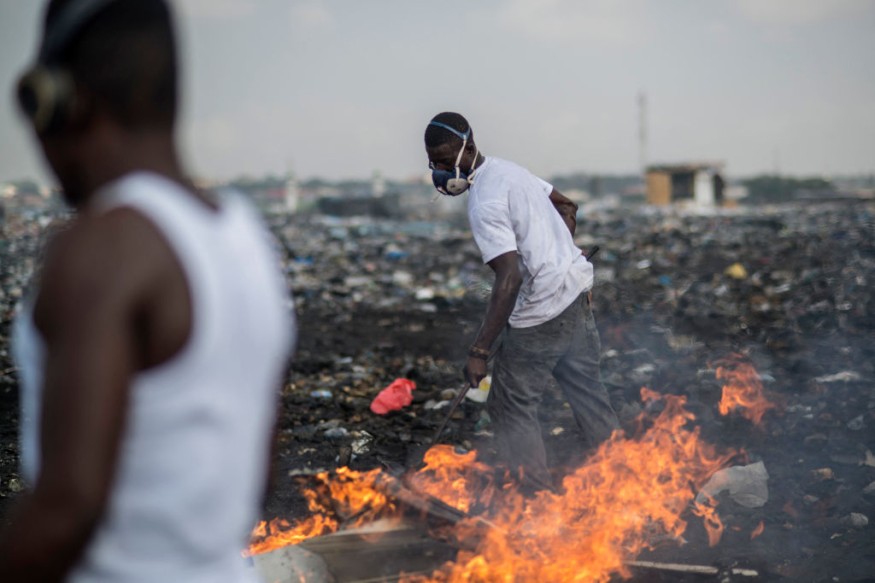The most toxic places on Earth are those locations where humans are strictly prohibited as they are heavily polluted by chemicals, electric waste, and others.
These areas are reminders of the environmental and human health challenges posed by industrial accidents and improper waste disposal. Below are the top 10 most toxic planets on the planet from Blacksmith Institute's 2013 list.

10. Norilsk, Russia
Founded in 1935 as a slave labor camp, Norilsk, Russia, is the northernmost major city above the Arctic Circle and houses the world's largest heavy metals smelting complex. Norilsk Nickel, responsible for substantial pollution, is a leading producer of non-ferrous and platinum-group metals, contributing significantly to Russia's total production of nickel, cobalt, platinum, and palladium.
The city, known for extreme pollution, faces environmental and health challenges, with black snow, sulfur-laden air, and a life expectancy for factory workers 10 years below the Russian average.
9. Niger River Delta, Nigeria
The Niger River Delta, constituting nearly 8% of Nigeria's land mass, has been heavily polluted by oil spills, with almost 7,000 incidents reported between 1976 and 2001.
Ongoing oil extraction, reaching 2 million barrels daily as of 2012, has led to groundwater and soil contamination, devastating aquatic and agricultural communities and posing severe health risks, including a potential 60% reduction in household food security and a 24% increase in childhood malnutrition, according to a 2013 study.
8. Matanza-Riachuelo, Argentina
The Matanza River in Argentina, labeled one of the most polluted places globally, faces contamination from industrial waste, particularly tanneries, causing severe health problems for local residents, including respiratory issues and gastrointestinal illnesses, especially affecting children. Despite efforts to address pollution, progress has been slow, and significant challenges persist in improving the quality of life for those living near the river.
7. Kalimantan, Indonesia
In Kalimantan, Indonesia, artisanal small-scale gold mining (ASGM) in Central and South provinces involves about 43,000 people, contributing to approximately 30% of global anthropogenic mercury emissions, releasing over 1,000 tons annually.
Despite the international attention to mercury vapors, the most severe health risks are localized, with miners smelting within homes and releasing dangerous mercury vapors, impacting waterways and accumulating in fish, exceeding Indonesia's drinking water standards.
6. Kabwe, Zambia
In Kabwe, Zambia, the historical mining and smelting activities for zinc and lead, which operated until 1994, have left the city with severe lead contamination in soil and water. With dispersal extending over a 20 km radius, the contaminated waterway poses risks, especially to local children who use it for bathing, while dusty soils contribute to toxic lead exposure for workers and residents.
READ ALSO : Scientists Found Nearly 42,000 Toxic 'Forever' Chemicals That Could Contaminate Drinking Water
5. Hazaribagh, Bangladesh
In Hazaribagh, Bangladesh, where 270 registered tanneries operate on outdated methods, toxic waste, including cancer-causing hexavalent chromium, is discharged into the Buriganga River daily. The polluted water sources and air in the area pose severe health risks, with residents experiencing skin and respiratory diseases, acid burns, and various common health problems due to hazardous chemical exposure.
4. Dzerzhinsk, Russia
Dzerzhinsk, a former Soviet chemical manufacturing center, has faced severe pollution from improper disposal of chemical wastes, leading to groundwater contamination with over 190 identified chemicals. Residents suffer from increased diseases and cancers due to toxic phenol, causing a significant decline in life expectancy.
3. Citarum River, Indonesia
The Citarum River, heavily polluted with waste, toxic chemicals, and dead animals, faces severe environmental degradation, causing the destruction of 60% of its fish species since 2008. Despite being crucial for 25 million people relying on it for agriculture, water, and electricity, the river fails to meet water quality standards, leading to health issues and crop damage for those dependent on its contaminated water.
2. Chernobyl, Ukraine
The Chernobyl disaster in 1986, the worst nuclear catastrophe, led to 30 deaths, 135,000 evacuations, and the release of one hundred times more radiation than the Hiroshima and Nagasaki bombings.
While most radioactivity remains within the plant, concerns arise due to potential releases of over 100 tons of uranium and other radioactive materials in case of further accidents, along with fears of groundwater contamination from leaks in the structure.
1. Agbogbloshie Dumpsite, Ghana
Agbogbloshie in Accra, Ghana, is West Africa's second-largest e-waste processing area, receiving around 215,000 tons of secondhand electronics annually. The complex recycling process involves burning sheathed cables to recover copper, posing public health risks due to the release of heavy metals like lead into the air and soil.
RELATED ARTICLE:
4 Most Radioactive Places In The World: Where Are They Located?
Check out more news and information on Pollution in Science Times.











